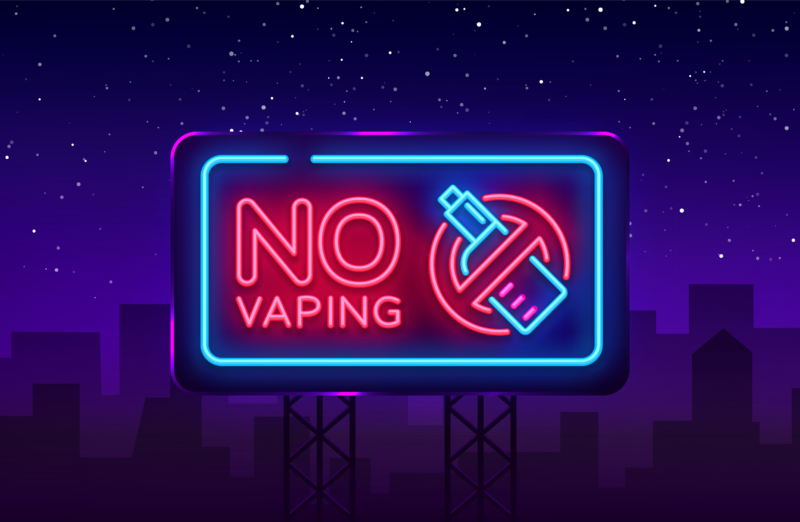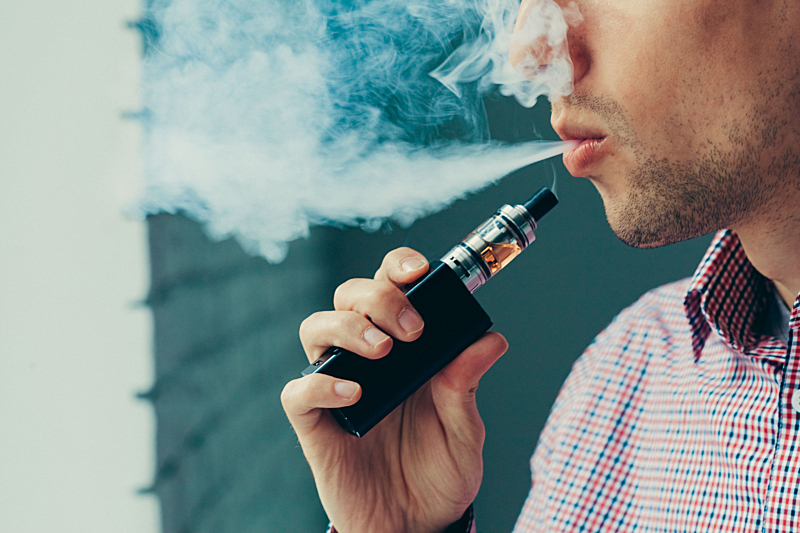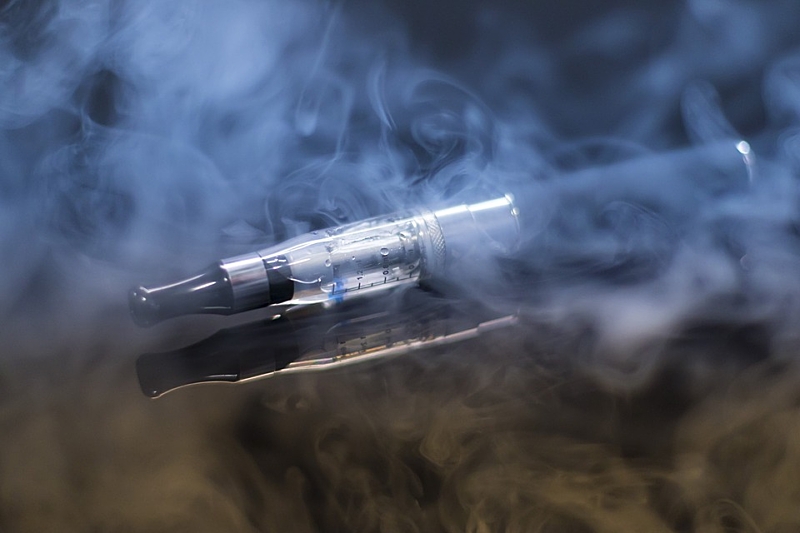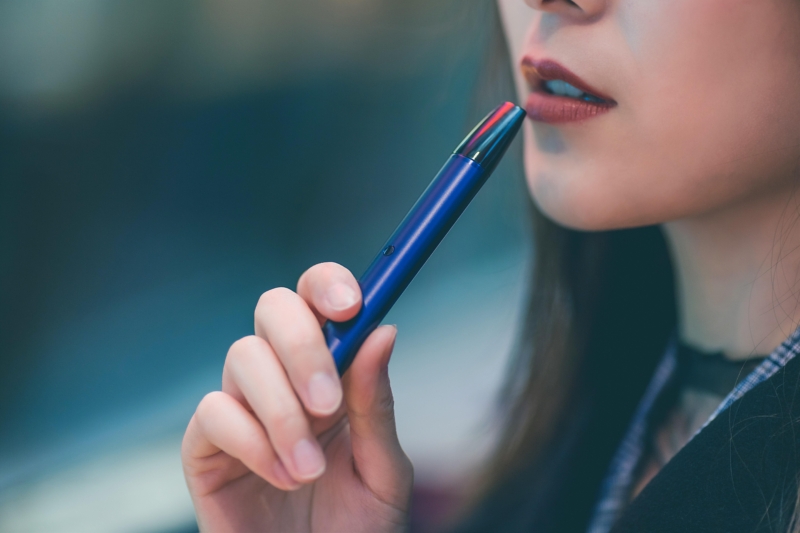
Vapes are devices which produce a vapour (aerosol) that the user inhales. This vapour is created by heating a liquid inside the vape. There are a variety of different liquids, or juices, available. These liquids contain a base (usually propylene glycol or vegetable glycerine), flavourings and many also contain nicotine.
Vapes are also called e-cigarettes or ENDS (electronic nicotine delivery systems) products and come in many forms including pens, pods, pipes and tanks.
Vapes have widely been promoted as a quit-smoking tool, however since their introduction in New Zealand vaping has become increasingly prevalent amongst young New Zealanders, including those who have never smoked. The most recent statistics from the NZ Health Survey show that daily vaping rates have increased amongst young people aged 15 to 24 years to 18.6%.

The e-liquids or ‘juices’ used in electronic vaping devices generally consist of three key components: solvents, flavours and sweeteners, with some juices also containing nicotine. When you inhale the aerosol vapour produced by these devices you are also inhaling the fine particles of these ingredients.
Little is known about the effects these ingredients have on the human body when inhaled, with research in this area still developing. However, what we do know is that many of the ingredients commonly found in vaping devices break down to form dangerous compounds when heated, with some ingredients being found to have cancer-causing properties.
There are even instances where vapes have been found to include traces of toxic heavy metals leached from the heating elements. You can read more about the ingredients here.
For some people, vaping can be a useful quit smoking tool. However, vaping needs to be used alongside other support services. The risk of starting vaping to quit smoking is that you could become addicted to both smoking and vaping, so support and advice is important.
The most recent research from the NZ Health Survey 2021/2022 found that 10.3% of New Zealanders over the age of 15 were vaping at least once a month. This has increased from 3.9% in 2017/2018.
The ASH Year 10 Snapshot Survey for 2022 found that daily vaping rates amongst 14 to 15 year olds was 10.1%. However for Māori teens, the rate was 21.7%.
The Secondary Principals’ Association of NZ/ ARFNZ 2021 survey of 19,000 students in Year 9 to 13, found that 27% of young people reported vaping in the last week, compared to 15% smoking traditional cigarettes.

The long-term health risks of vaping are not yet known. But research so far has found that vaping and second-hand vaping can irritate the lungs, increase coughing and worsen symptoms of respiratory conditions like asthma.
Many vapes contain nicotine, including products that claim to be nicotine-free. Nicotine is highly addictive and impacts brain development in young people and can cause problems with concentration and mood. Vapes also contain additives and flavours which have been approved for use in food products, but haven’t been tested if they are safe when inhaled into the lungs.
Dr Stuart Jones, advisor to the Asthma and Respiratory Foundation NZ explains: “The stomach is very different to the lungs. There are a raft of studies demonstrating many of them are toxic to lung cells especially chocolate and berry. There are also currently no consumer safety requirements for these products.”
Vaping and e-cigarettes can also raise your blood pressure, heart rate and can alter your heart’s function.
Evidence reveals that these products are harmful to health and are not safe. However, it is too early to provide a clear answer on the long-term impact of using them or being exposed to them.
The World Health Organisation report on e-cigarettes in 2022
Read more on the impacts on health here.
In June 2023, the Government announced a new range of measures to stop young people taking up vaping. These included:
These rules will come into force from August 2023, but there will be a three-month period for disposable vapes to meet the requirements and six-months for reusable vapes.
While the Foundation is pleased the more restrictions have been introduced, we do not think these rules go far enough. You can read our media release here.
The 2020 Smokefree Environments and Regulated Products (Vaping) Amendment Act introduced a range of new restrictions on vaping. These rules prohibited the sale of vaping products to anyone under 18 years old and prohibited vaping in workplaces, schools, early childhood education and care centres, and a number of other locations. It also banned vaping product companies from advertising and sponsorship.
The Act restricted general retailers (dairies, supermarkets, convenience stores) to selling only three vape flavours: tobacco, mint and menthol, and introduced rules around advertising and promotion of these products. Only approved Specialist Vape Retailers (SVRs) are permitted to sell the full range of vape flavours and are exempt from some advertising restrictions. To become a SVR, businesses must apply to the Vaping Regulatory Authority.
To get around these restrictions many dairies and convenience stores have created ‘store within a store’ set ups, placing a vape shop within their current premises. They have then registered this store as a SVR allowing them to sell all flavours and avoid advertising restrictions. This loophole has allowed for the rapid growth of vaping retailers in New Zealand. We currently have over 1200 SVRs registered in New Zealand.
More information on the act and the regulations can be found here.
The best thing that you can do for your respiratory health is to be smokefree and vape free.
The Foundation acknowledges that vape devices, in conjunction with wraparound quit smoking support, may help some people to quit tobacco cigarettes.
We recognise that the Ministry of Health needs to balance the availability of vape devices and e-cigarettes to current smokers as a quit smoking tool, while protecting young people from the harms of vaping.
We believe that currently this balance is off, and that more regulations are needed to protect young New Zealanders from vaping.
The Foundation was pleased that the Government announced new regulations to curb youth vaping in June 2023, however we do not think these regulations go far enough. We want to see:

The current allowable limit of nicotine in vaping products in New Zealand is 50mg/ml – which is a very high level of nicotine. To put that into perspective, anything over 18mg/ml is considered a high strength nicotine vape. 50mg/ml is equal to smoking 25 to 50 cigarettes – and because of the way the nicotine is often incorporated into vapes (as a salt) it is less harsh on the throat and therefore more easily palatable making it more addictive and more palatable. The Foundation wants the maximum level to be set at 20mg/ml in line with the European Union.
Don’t Get Sucked In is a website encouraging teens to think critically about vaping. The website shares important information and research about vaping products and their use. The material that is on this website is all evidence based and reviewed by our Vaping Educational Advisory Group made up of a wide array of experts including registered health practitioners. The Ministry of Health has also created a website aimed at young people which can be viewed here.